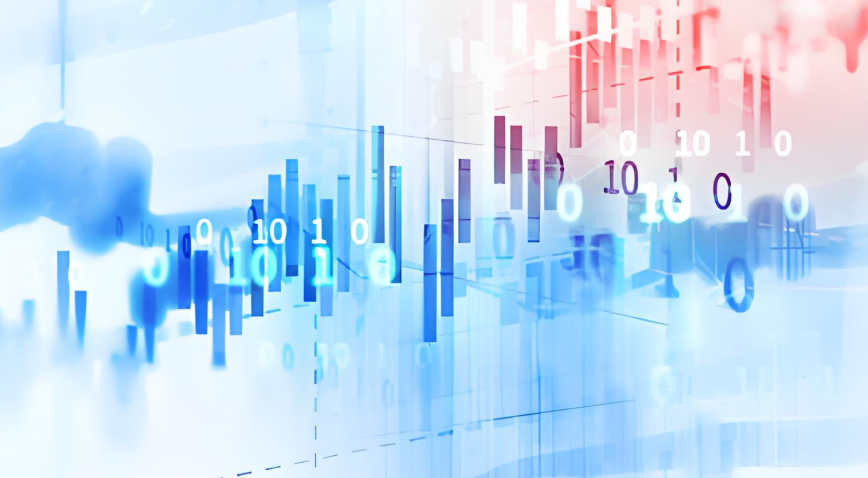The Uncertainties of the U.S. Currency in 2025
Advertisements
As the year 2025 begins, the Federal Reserve is undergoing a significant transition with the rotation of its voting members on the Federal Open Market Committee (FOMC). This year, prominent figures such as the Chicago Fed President Austan Goolsbee, the Boston Fed President Susan Collins, the St. Louis Fed President James Bullard, and the Kansas City Fed President Patrick Harker are stepping into the roles previously held by four voting members in 2024. The contrasting ideologies among these new members could deepen existing divisions within the Fed, potentially leading to a more complex monetary policy landscape in the months to come.
Austan Goolsbee, with his academic pedigree as a former economics professor at the University of Chicago, has consistently been viewed as a "dove" in the context of Fed policymaking. His career includes notable appointments, such as serving as the chair of the Council of Economic Advisers during the Obama administration. He advocates for easing interest rates in 2025 to safeguard against a cooling labor market that could stifle economic growth.
On the contrary, the new members from the industry sector, James Bullard and Patrick Harker, lean toward a more "hawkish" approach to monetary policy. Bullard has openly commented on the prudent need for the Fed to be cautious about lowering rates too swiftly. He argues that inflation risks could resurface as the economy begins to stabilize. Similarly, Harker has voiced his preference against significant rate cuts, suggesting that any adjustments should be gradual to maintain market stability.
Susan Collins, a relative moderate amidst the new members, emphasizes a data-driven approach for rate decisions. Collins insists that instead of determining a predetermined path for rate cuts, policymakers should remain flexible and responsive to incoming economic data, maintaining a neutral stance that allows for a balanced view of the risks associated with inflation and economic growth.
The evident ideological divisions among the new FOMC members could intensify the debates within the committee. In 2024, the Fed executed three rate cuts; however, the decision was not unanimous on two occasions, signaling underlying dissent. For instance, Cleveland Fed President Loretta Mester directly opposed one proposed cut in December 2024, advocating for the preservation of current rates based on inflation concerns.
With the introduction of the new members, market analysts, including those from Bloomberg, predict a widening "hawk-dove spectrum" within the FOMC. This shift could lead to a reduced number of neutral voices, increasing the likelihood of contentious debates and divergent opinions on policy directions. The increasing presence of hawkish members, particularly with inflation remaining above the desirable 2% target level, suggests a tilt toward more conservative monetary policies.

In December 2024, the Federal Reserve lowered its benchmark interest rate by 25 basis points, bringing it down to a range of 4.25%-4.5%. Alongside this action, Chair Jerome Powell indicated that the pace of future rate reductions would be considerably slower, heavily dependent on the trajectory of inflation. The caution displayed by the Fed reflects a careful balancing act concerning economic recovery and inflationary pressures.
The complexities surrounding inflation forecasts add another layer of difficulty to decision-making for the Fed. According to the December 2024 economic projections, a significant majority of FOMC members—15 out of 19—identified upward inflation risks, a noticeable increase from prior assessments. Such concerns are further compounded by prospective shifts in economic policy under a new administration that may involve tax changes and tariff adjustments, posing additional inflationary pressures while potentially constraining labor market dynamics.
In light of these developments, market participants find themselves navigating an environment laden with uncertainty. The Fed's recent actions have been perceived as part of a challenging easing cycle, leading to unexpected fluctuations in financial markets. Despite the Fed's intentions, the mortgage rates for 30-year loans have increased rather than decreased, mirroring similar trends in the yield of 10-year U.S. Treasury bonds, which have also surged.
Reactions among investors must be agile to address the potential for increased internal divisions within the Fed alongside a complex economic backdrop. Stakeholders should remain vigilant, carefully monitoring Fed communications and public comments from the new voting members to glean insights into the committee's decision-making processes. The release of crucial economic data will serve as a vital indicator of future regulatory shifts, making its interpretation a priority for investors aiming to adjust their strategies accordingly.
Furthermore, participants should stay attuned to the wider global economic landscape. Key developments in Europe's and Asia's major economies might lead to policy changes that ripple back to U.S. markets. Heightened geopolitical risks could also weigh heavily on market sentiment, making adaptability a valuable trait for investors faced with an ever-evolving economic climate.
As we look to the future, the rotation of Fed voting members in 2025 signifies new variables influencing monetary policy formation. The augmented presence of hawkish perspectives within the decision-making framework could exacerbate existing schisms, especially against a backdrop of economic uncertainty and inflationary pressures. Investors must remain astute, aligning strategies with observed Fed signals to navigate potential volatility.
In a world where challenges abound, the Fed's policymaking increasingly relies on data-driven insights. Minor fluctuations in economic indicators may dictate substantial policy shifts, necessitating sharp analytical acumen and flexibility from market participants as they confront emerging risks and capitalize on unforeseen opportunities. As 2025 unfolds, the interplay of uneven global economic recovery, prevalent geopolitical tensions, and internal Fed disagreements creates a tapestry rich with challenges and possibilities, compelling investors to hone their ability to identify advantageous moments amidst the chaos.
Post Comment